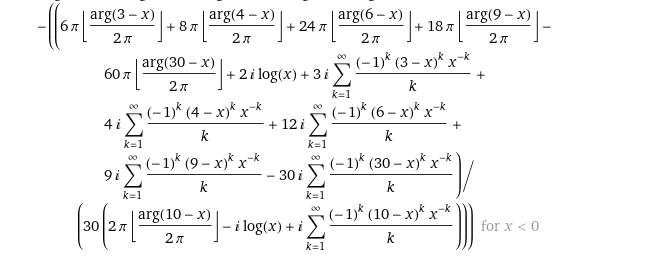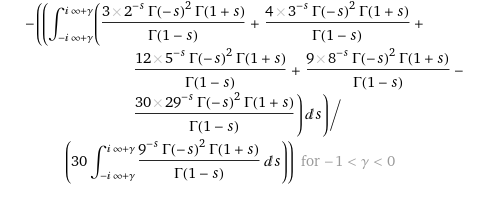The justpaste it link includes several different representations of the Series, as well as a couple other interesting extrapolations. The main sequence I want to note is:
0,1, 3, 115, 118, 469, 587, 1056, 1643, 2699, 12439, 15138, 42715, 57853 …
This sequence is my own invention, it isn’t catalogued in the OEIS, and it also has a strange relationship with the order of Primes. I came upon this repeating number pattern by comparing the different base-systems and working with the sums of digital roots, eg. of 4n, 5n, etc.
Digital summing is: 11= 1+1= 2. In other words: 2 is the digital sum of the number 11. A spirogram is one of ten diagrammatic reductions of the base system, I will just include here the ninth Spirogram, because it is interesting. In fact it is the entire basis of the CCRU’s numogram system: (you can skip this section, which I put in smaller font, if you want)
/[size=85]////
SPHAERICA (SPIROGRAMMATA) 9: “Cthell” Dif. 5
(Zygonovic Spiral, ie. the Nummagram. Barker Speaks, CCRU: “In Decadence five makes ten by doubling, or pairing with itself, scoring zero. This tantalized me, but I couldn’t fit it together theoretically. The quandary was unlocked on this occasion, when one of the participants casually mentioned the existence of an occulted variation of the game, called Subdecadence, based on a system of nine sum twinning. Subdecadence introduces zeroes, and nine-zero twins.” This sphere is used by the POD, Zothyrian cultists, Numma cultures, and CCRU for the purposes of chrono-sorcery and “Transyuggothic” xenodemonology.)
0: 9 Utunul
1: 8 The Murmerer
2: 7 Oddub
3: 6 Djinxx
4: 5 = 9 Katak
Supercumulation: 45 plus 36 plus 27 plus 18 plus 9=135
Note that the number 135 can be broken down in the following way, reproducing two currents within the nummogram:
(1:3):5, 4:5 = 1(3:5), 1:8 .
The 0=9 in the above Sphere represents what the CCRU called the toroidal-Plutonic looping, by which the entire sequence 0-9 is “produced” out of the number nine itself by way of a machinic code or ‘pure numeracy’ stripped of its metric functions.
Arranged as the CCRU arranges their Numogram into five differential Currents, divided into 3 Regions:
Warp:
3: 6
Time circuit:
5: 4
2: 7
1: 8
Plex:
9: 0
The numbers themselves, 0-9, are Zones, the Currents between these zones are differences, the three Regions are the Warp, Time, and Plex, while the Gates are summations arrived at by way of ‘plexion’. As to the gates, the first points from 1 to 1, as that is the only way to yield the number 1 summatively, save through 0+1. The second gate points from 2 to 3, and so on. All nine gates are given as follows:
1:1, 2:3, 3:6, 4:1, 5:6, 6:3, 7:1, 8:9, 9:9
An interesting pattern can be observed here: the second number of each of these pairings (1,3,6,1,6,3,1,9,9 …) forms a repeating pattern, specifically the digital root of the triangular numbers, catalogued as A145389 in the OEIS.
Take this digital root of the triangular number sequence:
1,6,/3,1,/9,9,/1,3,/6,1,/6,3,/1,9,/9
Take the differences of each two numbers: 5,2,0,2,5,3,8 (OEIS A070860: Decimal expansion of (-1)*c(1) where, in a neighborhood of zero, Gamma(x) = 1/x + c(0) + c(1)*x + c(2)*x^2 + … ) (Gamma(x) denotes the Gamma function)
1,6,/3,1,/9,9,/1,3,/6,1,/6,3,/1,9,/9
Digital summing: 7,4,9,4,7,9,1,
Take the Tri. number sequence: 1, 3, 6, 10, 15, 21, 28, 36, 45,55, 66, 78, 91, 105, 120, 136, 153, 171, … Adding every two numbers gives this: 4,16,36,64,100,144,196. This pattern is A016742: Even squares: a(n) = (2*n)^2. Digital summing this second pattern gives this: 4,7,9,1,1,9,7 …, which is A191760: Digital root of the n-th odd square.
///////////////////////////////////////////
[/size]
At any rate, I noted that 135 was the supercumulation of the ninth spirogram. I worked out the same for all ten and got the following pattern: 1,13,15,39,42,78,82,130,135,185
Decimally reducing these supercumulations and differences of the ten spirograms by digital summing, in order, you have the following sequence:
1,3,4,2,6,6,3,3,6,9,6,4,1,3,4,5,8,5
Breaking it down into parts, note the dense patterning:
1,3,4,2,6, ] 6,3,3,6,9,6,4,1,3,4,5,8,5
The third number is the digital sum of the first two numbers.
1+3=4
The fourth and fifth numbers sum to 8, which is the digital sum of the first three numbers:
1+3+4=8 (2+6)
1,3,4,2,6, 6,3,3,6,9,6,] 4,1,3,4,5,8,5
The sixth, seventh, and eight number digitally sum to 3, which is the same for the ninth, tenth, and eleventh number:
6+3+3=12=3 (6+9+6=21=3)
1,3,4,2,6, 6,3,3,6,9,6, 4,1,3,4,5,8, ] 5
The twelfth number is the digital sum of the thirteen and fourteenth numbers:
4= 1+3
The fifteenth, sixteenth, and seventeenth numbers digitally sum to the eighteenth number, five:
4=5+8=13=4 (1+3)
Analyzed another way:
First, up to the third digit.
1,3,[4],2,6,6,3,3,6,9,6,4,1,3,4,5,8,5
1+3=4
Thus the 1 and 3 are replaced with a four and the patter is recreated as follows:
4,4,2,6,6,3,3,6,[9,]6,4,1,3,4,5,8,5
4+4=2+6 (8)
6+3=3+6 (9)
This moves us to the ninth digit, regenerating the pattern, with the former digits reduced simply to 9:
9,9,6,4,1,3,4,[5],8,5
The first seven digits of the new sequence are reduced similarly:
9+9 = 6+4+1+3+4 (18=1+8=9)
Recreating the sequence as:
9,5,8,5
And reducing once more:
9=5+8+5 (18= 1+8=9)
^ Thus a Fibonacci-like sequence emerges. It’s just that my sequence is better than Fibonacci’s cuz I got a bigger cawk ![]()

